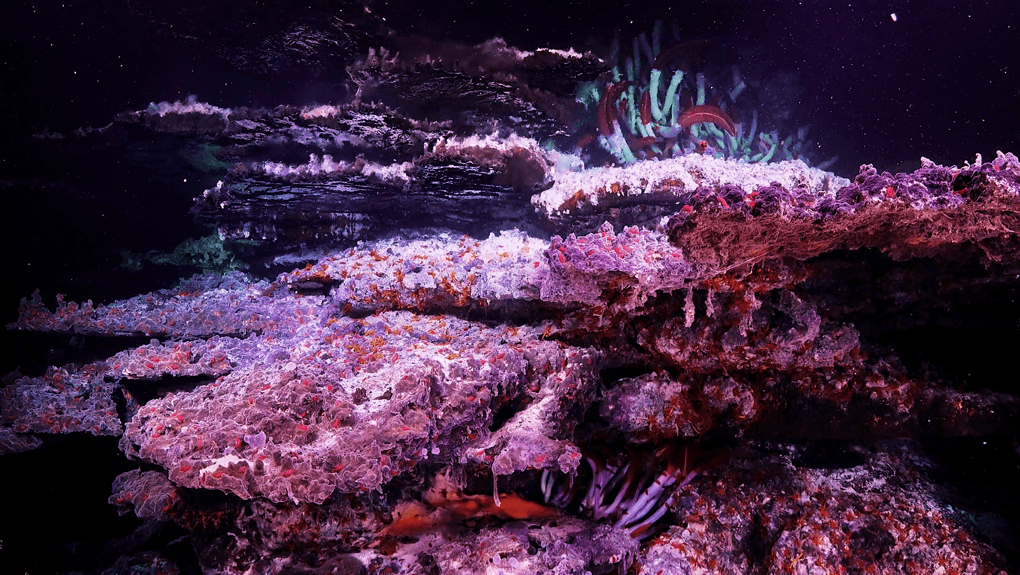Sonal Butala 22′
Scientists aboard Schmidt Ocean Institute’s research vessel Falkor have recently discovered and explored a stunning hydrothermal field in the Gulf of California 2,000 meters below the surface. These newly discovered geological formations feature upside-down mirror pools and towering mineral structures as biological hotspots for life.
While exploring the hydrothermal vents in the cold, subterranean environment, Dr. Mandy Joye (University of Georgia), and her interdisciplinary research team discovered large venting mineral towers reaching up to 23 meters in height and 10 meters across. These towers feature deep-sea volcanism at work, with active volcanoes littered across the massive landscape. A unique observation the team made was that the volcanoes create the illusion of looking at a mirror when observing the superheated (366ºC) hydrothermal fluids beneath them. The minerals across the surface were rich with metals and the fluids were highly sulfuric, yet these sites were teeming with biodiversity and potentially novel fauna.
The expedition was conducted for researchers to study hydrothermal and gas plumes, in particular the various minerals that were being spewed out of the Earth. To get a true measure of methane and the other volatile substances on the seafloor, scientists need to capture the samples at the source with a unique osmo sampler, a device that draws hydrothermal fluids into small capillary-like tubing, mounted onto the ROV SuBastian (a remote operated vehicle). Several other experiments were performed on the ocean floor, including a high-water filtration for viruses through which the team reduced biases in their data.
The team discovered that the hydrothermal fluids and gas plume samples all contained highly elevated concentrations of methane and surface-breaching methane hydrate mounds. As a potent atmospheric greenhouse gas, methane is dangerous for most life forms; despite this, scientists uncovered an entire biome of life that lives in the deep sea with extreme concentrations of methane. It seems that life has truly evolved to live anywhere.
However, Dr. Joye’s team made another alarming discovery: human pollution has not left deep-sea waters untouched. In stark contrast with the remote beauty of the landscape, the crew was disheartened to see copious amounts of trash on the sea floor, including fishing nets, deflated Mylar balloons, and even a discarded Christmas tree. While the alien features stood out to the team, so too did the detrimental evidence of human activity.
In the words of Schmidt Ocean Institute Cofounder Wendy Schmidt: “Witnessing these remarkable oceanscapes, we are reminded that although they are out of our everyday sight, they are hardly immune from human impact. Our hope is to inspire people to learn more and care more about our ocean.” It is 75 percent of our surface, after all.
References:
- Schmidt Ocean Institute. “Otherworldly mirror pools and mesmerizing landscapes discovered on ocean floor.” ScienceDaily. ScienceDaily, 3 April 2019. <www.sciencedaily.com/releases/2019/04/190403135033.htm>.
- “Otherworldly Mirror Pools, New Lifeforms, and Mesmerizing Landscapes Discovered on Ocean Floor.” Schmidt Ocean Institute, 3 Apr. 2019, schmidtocean.org/new-lifeforms-and-mesmerizing-landscapes-discovered-on-ocean-floor/.


Leave a Reply